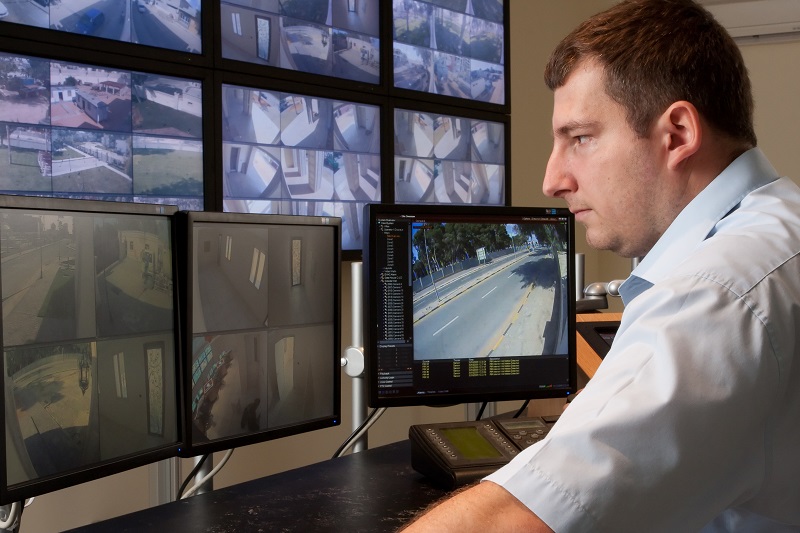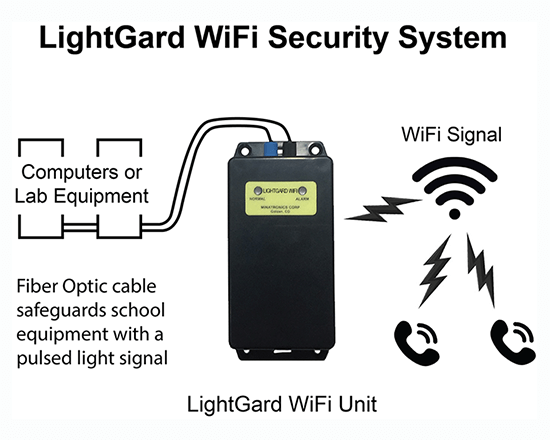Why Fiber Optic Safety And Security Systems Are the Future of Defense
The transition to fiber optic safety systems marks a significant development in the world of security, driven by their outstanding information transmission abilities and durability to exterior interferences. As the landscape of protection evolves alongside emerging innovations such as AI and IoT, the possibility for fiber optics to improve and redefine security frameworks comes to be significantly obvious.
Benefits of Fiber Optic Equipments
Among the key benefits of fiber optic systems is their premium data transfer capability, which assists in the transmission of large volumes of information over fars away without significant loss. This particular is particularly useful for safety applications that call for the constant tracking and transfer of high-def video feeds, sensing unit data, and various other vital info. Optical fiber can fit the expanding needs of contemporary security systems, guaranteeing that data stays intact and trusted.
In addition, fiber optic cables are much less vulnerable to electro-magnetic interference, which can be a substantial issue in atmospheres with various digital devices. This resistance enhances the integrity of the data being sent, thereby reducing the risk of data violations or system failings. Fiber optic systems are inherently a lot more secure than conventional copper cords, as tapping into a fiber optic line without detection is exceedingly difficult.
The durability of fiber optic cables likewise adds to their allure. They are immune to ecological elements such as dampness and temperature level changes, reducing maintenance prices and enhancing system longevity. On the whole, these advantages placement fiber optic systems as a durable and reliable option for modern protection facilities, ensuring reliable and safe and secure data transmission.
Boosted Information Transmission Speed

The ability to send vast amounts of information quickly facilitates the seamless integration of high-def video feeds and advanced analytics. Safety and security systems can currently refine and assess details in real-time, improving reaction times and situational awareness. In addition, fiber optic connections sustain longer transmission ranges without destruction of signal high quality, making them excellent for extensive security networks.
The enhanced rate of fiber optic systems not just improves the effectiveness of safety procedures but additionally lowers latency. This is especially essential in vital scenarios where timely decision-making can avoid protection violations or minimize potential risks. As companies remain to focus on security and efficiency, the demand for rapid and reputable data transmission will undoubtedly strengthen fiber optic systems as a foundation of modern security framework.
Resistance to Disturbance
Fiber optic safety systems regularly demonstrate outstanding resistance to electromagnetic disturbance, an essential benefit in settings susceptible to electronic sound. Unlike typical copper cable televisions, which can be adversely impacted by magnetic fields, radio regularity disturbance, and other forms of electric disruption, fiber optic cable televisions make use of click to read more light to transfer data. This integral home guarantees that the signals stay clear and unaltered, regardless of bordering electronic task.
Making use of glass or plastic fibers in fiber optic technology creates an obstacle against interference, enabling dependable information transmission also in tough scenarios such as commercial centers, metropolitan areas with high digital website traffic, or locations near radio towers. This characteristic significantly lowers the likelihood of signal degradation or loss, making fiber optic systems particularly suitable for safety applications where stability and accuracy of information are paramount.
In addition, this resistance to disturbance improves the total efficiency and reliability of safety and security systems, ensuring that surveillance and alert systems operate effortlessly. In a globe where safety is significantly endangered by advanced innovations, the durability of fiber optic systems stands out as a pivotal feature, reinforcing their condition as a vital element of modern-day security infrastructure.
Cost-Effectiveness Over Time
Substantial price savings can be attained with time with the application of fiber optic security systems. While the initial investment might seem higher contrasted to standard copper-based systems, the long-term economic advantages emerge via lowered operational and maintenance expenses (fiber security). Fiber optic wires are naturally extra sturdy and much less at risk to environmental factors, Visit This Link which equates to lower substitute and repair costs over their life-span
Furthermore, fiber optic systems call for less power to run, which further lowers energy costs. Boosted information transmission abilities permit fewer repeaters and amplifiers, decreasing equipment investment and enhancing installment processes. The scalability of these systems additionally contributes to cost-effectiveness, as organizations can increase their security facilities without incurring significant extra expenditures.
An additional variable to consider is the increased performance in surveillance and action capacities that fiber optics supply. Enhanced real-time information transmission can bring about quicker event response times, potentially mitigating losses and obligations related to safety and security breaches. In sum, the long-lasting advantages of fiber optic security systems not only validate the first expenditure yet also position them as a financially prudent choice for organizations seeking robust protection remedies.

Future Technologies in Security
Progressing technologies are readied to reinvent safety and security systems, incorporating synthetic intelligence (AI) and artificial intelligence to enhance danger discovery and reaction capabilities. These technologies will enable safety and security systems to evaluate large amounts of information in real-time, identifying patterns and abnormalities that suggest webpage prospective hazards. This proactive technique will certainly make it possible for quicker decision-making and more reliable incident reactions.
In addition, the consolidation of the Internet of Things (IoT) is leading the way for interconnected safety gadgets, using thorough security and surveillance. Smart sensors can pass on details regarding ecological adjustments, while automated signals can alert protection workers immediately of suspicious activities.
In addition, the development of biometric technologies will additionally bolster safety and security devices. Face recognition, finger print scanning, and retina recognition are becoming more sophisticated, giving layers of authentication that are challenging to bypass.
Verdict
Finally, fiber optic safety and security systems represent a substantial development in defense technology, offering exceptional information transmission rate, resistance to electro-magnetic disturbance, and lasting cost-effectiveness. As the demand for advanced safety remedies remains to grow, the integration of optical fiber with emerging innovations such as AI, IoT, and biometrics will certainly further improve safety and security infrastructures (fiber security). The combination of these advancements will certainly guarantee a much more safe and secure and responsive atmosphere, solidifying fiber optics as a cornerstone of future protection systems